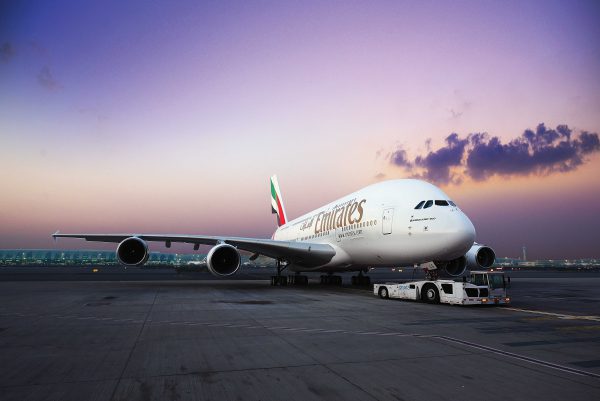DUBAI, 13 November 2019: The Emirates Group announced, Wednesday, its half-year results for the 2019-20 financial year.
Group revenue was AED 53.3 billion (USD 14.5 billion) for the first six months of 2019-20, down 2% from AED 54.4 billion (USD 14.8 billion) during the same period last year.
This slight revenue decline was mainly due to planned capacity reductions during the 45-day Southern Runway closure at Dubai International airport (DXB), and unfavourable currency movements in Europe, Australia, South Africa, India, and Pakistan.

Profitability was up 8% compared to the same period last year, with the Group reporting a 2019-20 half-year net profit of AED 1.2 billion (USD 320 million).
The profit improvement was primarily due to the decline in fuel prices of 9% compared to the same period last year. However, the gain from lower fuel costs was partially offset by negative currency movements.
The Group’s cash position on 30 September 2019 stood at AED 23.0 billion (USD 6.3 billion), compared to AED 22.2 billion (USD 6.0 billion) as of 31 March 2019.
Emirates Airline and Group chairman and chief executive His Highness (HH) Sheikh Ahmed bin Saeed Al Maktoum said: “The Emirates Group delivered a steady and positive performance in the first half of 2019-20.
“Both Emirates and dnata worked hard to minimise the impact of the planned runway renovations at DXB on our business and on our customers. We also kept a tight rein on controllable costs and continued to drive efficiency improvement, while ensuring that our resources were deployed swiftly to capitalise on areas of opportunity.
“The lower fuel cost was a welcome respite as we saw our fuel bill drop by AED 2.0 billion compared to the same period last year. However, unfavourable currency movements wiped off approximately AED 1.2 billion from our profits.”
The Emirates Group’s employee base remained unchanged compared to 31 March 2019, at an overall average staff count of 105,315. This is in line with the company’s planned capacity and business activities, and also reflects the various internal programmes to improve efficiency through the implementation of new technology and workflows.
During the first six months of 2019-20, Emirates received 3 Airbus A380s, with three more new aircraft scheduled to be delivered before the end of the 2019-20 financial year. It also retired six older aircraft from its fleet with a further 2 to be returned by 31 March 2020. The airline’s long-standing strategy to invest in the most advanced wide-body aircraft enables it to improve overall efficiency, minimise its emissions footprint, and provide high-quality customer experiences.
Overall capacity during the first six months of the year declined by 7% to 29.7 billion Available Tonne Kilometres (ATKM) mainly due to the DXB runway closure and reduction in the fleet during this 45-day period. Capacity measured in Available Seat Kilometres (ASKM), shrunk by 5%, whilst passenger traffic carried measured in Revenue Passenger Kilometres (RPKM) was down by 2% with average Passenger Seat Factor rising to 81.1%, compared with last year’s 78.8%.
Emirates carried 29.6 million passengers between 1 April and 30 September 2019, down 2% from the same period last year. However, passenger yield increased by 1% period-on-period.
Visit the website:






